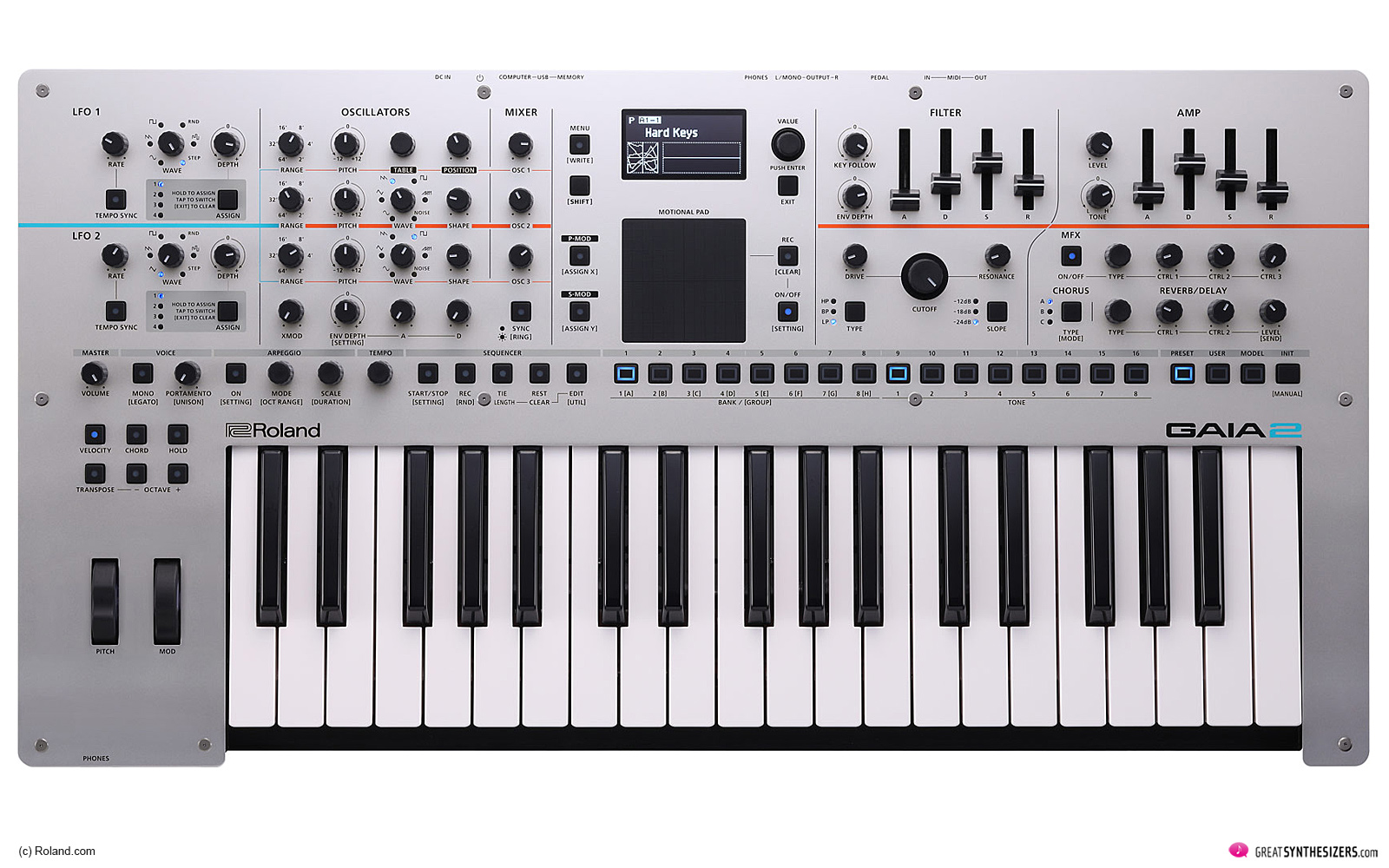The GAIA 2 hit us unprepared. Recent Roland synthesizers were boringly stuck to their never-ending Jupiter and Juno heritage, the New Sound Engine hymns of praise made us rather smile than deal with the respective instruments. GAIA 2 is surprising in that the digital youngster GAIA SH-01 gets an early – and unexpectedly well equipped – successor.
Hybrid synthesis (virtual analog combined with wavetables), solid hardware (mostly metal instead of plastic), a robust keybed with full-sized keys, numerous performance possibilities and USB expansion options … Roland seems to be back in the realm of serious instrument makers! And: GAIA 2’s price – just under 900 USD / Euros – is a real bargain …
GAIA 2’s magic word is dynamics (as a summary of all those marketing terms used for it). Dynamics is what the new (here we go again) sound engine is geared towards. Let’s let the marketing department express their praising words and soberly state that expressiveness and liveliness are likely to be at the center of the GAIA 2 sound experience. Which is welcome, of couse.
x
Part of the package is the easy connection of GAIA 2 to many other Roland products, be it MX-1 and TR-8S …
… or the constantly growing Roland Cloud, whereby the USB Connector WC-1 is only available as an option. 
However, this is perfectly fine, especially since USB can be used for many other tasks. Thus, the memory storage on stick …
… or the direct connection to a laptop / computer.
iPad, iPhone … everything can be connected … and of course there is still that old digital interface, MIDI, whereby MIDI IN and MIDI OUT is all you get (possibly due to the size of GAIA 2).
GAIA 2’s hybrid sound engine promises lots of creative output, the performance functions are comprehensive (motional pad, step sequencer and co.) … one can’t help but approach the GAIA 2 with interest and classify this new Roland synthesizer as worth exploring …
x
A few Roland demos:
x
x
Further info: www.roland.com







